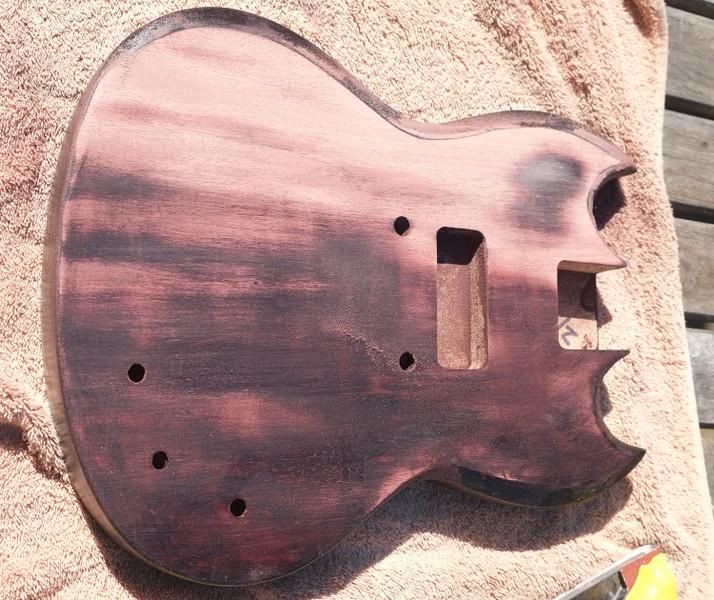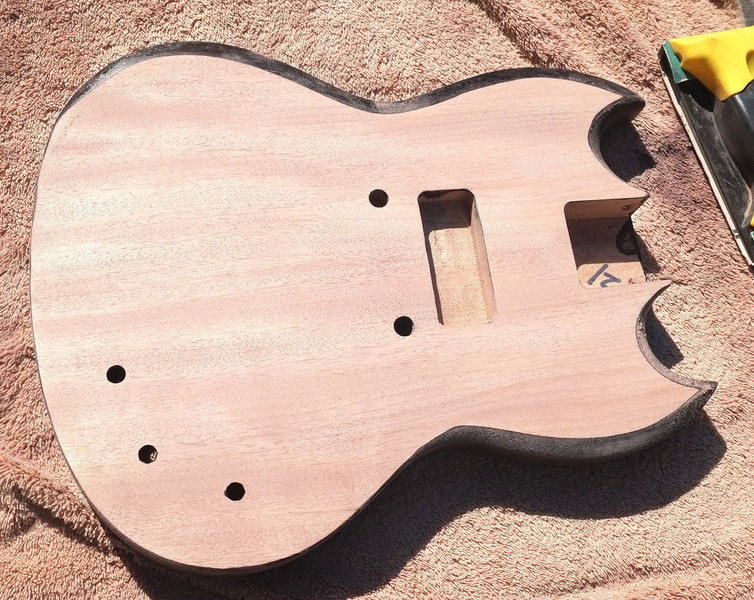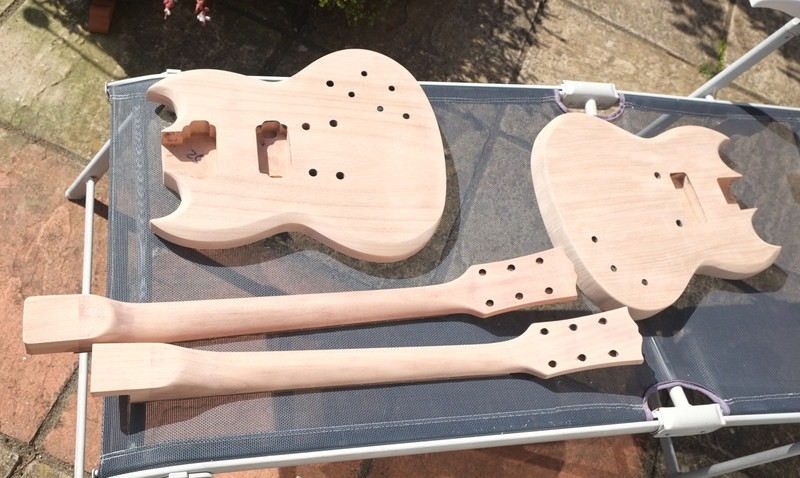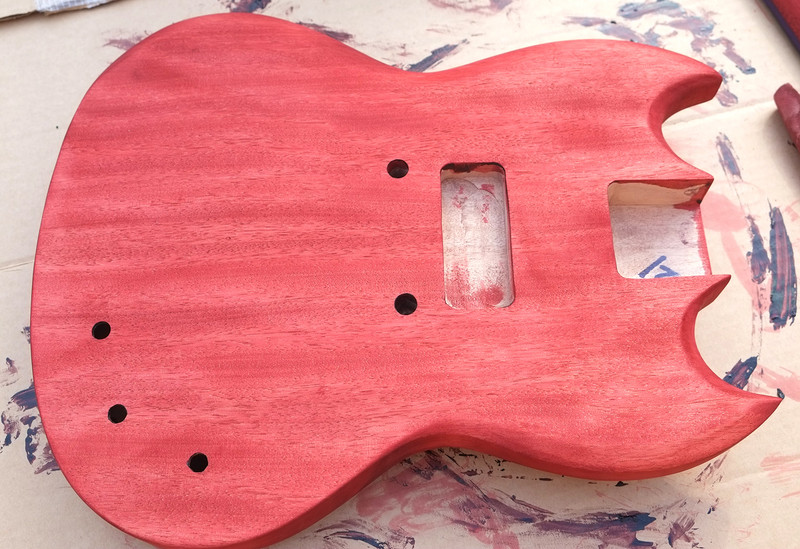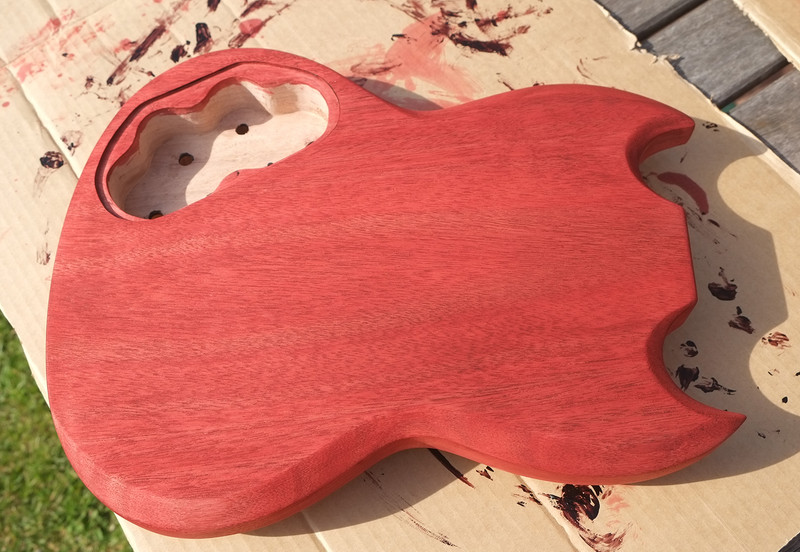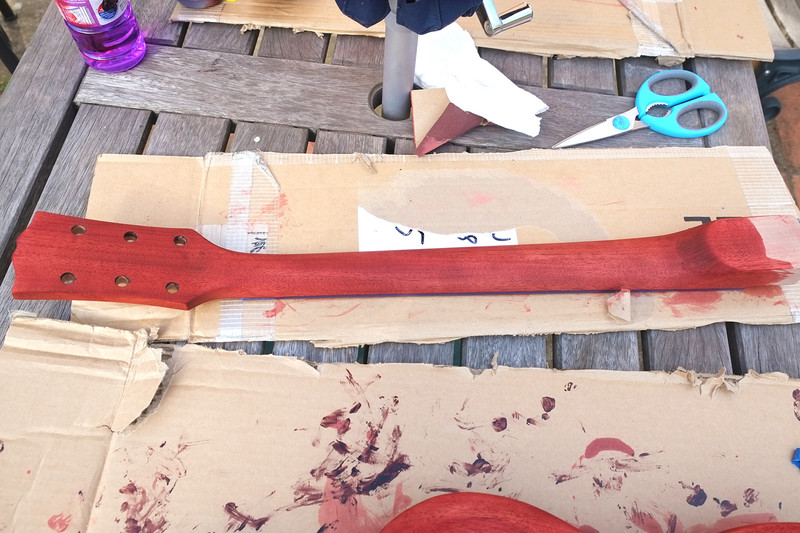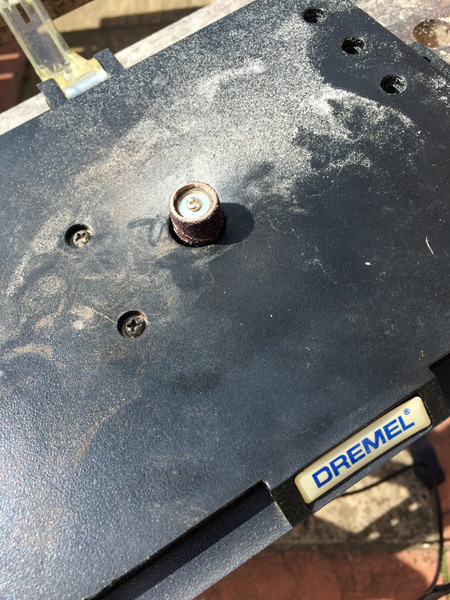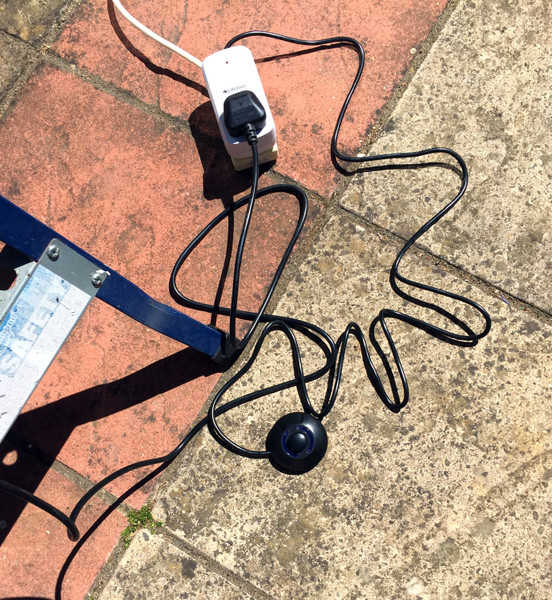The kit P-90 plate is the standard P-90 size, as is the rout. But I know it's not the same dog-ear P-90 that comes with the ES-5V kit.
I will need to work on the cover, as it doesn't quite sit fully on the pickup properly. You can push the plastic ears down a bit and the middle comes off the body slightly. A slight widening of the slug screw holes and a light sand inside should do it. Otherwise a re-bend of the pickup plate ears.
I miscalculated and it was only 8 hours, but that was still a lot for me. Still, I should have produced a lot of vitamin D sitting in the sun!






 Reply With Quote
Reply With Quote
